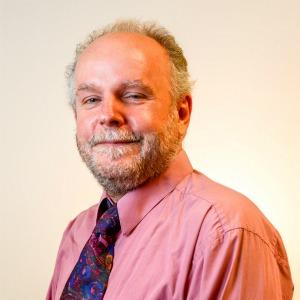
Credit: Georgia State University
ATLANTA–A natural process that occurs during photosynthesis could lead to the design of more efficient artificial solar cells, according to researchers at Georgia State University.
During photosynthesis, plants and other organisms, such as algae and cyanobacteria, convert solar energy into chemical energy that can later be used as fuel for activities. In plants, light energy from the sun causes an electron to rapidly move across the cell membrane. In artificial solar cells, the electron often returns to its starting point and the captured solar energy is lost. In plants, the electron virtually never returns to its starting point, and this is why solar energy capture in plants is so efficient. A process called inverted-region electron transfer could contribute to inhibiting this "back electron transfer."
This study's findings, published in the journal Proceedings of the National Academy of Sciences, provide quantitative evidence that inverted-region electron transfer is responsible for the very high efficiency associated with solar energy conversion in photosynthesis.
Theoretical work on this phenomenon won Dr. Rudolph Marcus the 1992 Nobel Prize in Chemistry, but until now the mechanism has not been demonstrated in natural photosynthetic systems. The researchers studied photosynthetic reaction centers from the freshwater cyanobacterium species Synechocystis, which has the same photosynthetic machinery as plants.
"We were able to reveal the existence of the mechanism for the first time by inventing a method to allow us to successfully undertake the required challenging experiments," said Dr. Gary Hastings, lead author and professor in the Department of Physics and Astronomy at Georgia State. "Our findings point to new ways on how one might think about designing artificial solar cells that can be used, for example, for producing hydrogen gas, which can be used as a clean and renewable fuel."
Solar energy, the cleanest and most abundant renewable energy source available, can be converted into thermal, chemical or electrical energy. By tapping into and converting a tiny fraction of the solar energy that falls on the earth each year, humans' increasing thirst for energy may be quenched, Hastings said. The solar market industry in the United States is working to scale up the production of solar technology and drive down costs, but it faces some challenges, according to the Solar Energy Industries Association.
"Plants convert solar energy ultra-efficiently, considerably more efficiently than any artificial solar cell," Hastings said. "In photosynthesis, light comes in, an electron moves across a membrane and it doesn't come back. The big problem with artificial systems is the electron does go back much of the time. That's the real heart of why plants are so efficient at converting solar energy.
"The details that underlie efficient solar energy conversion in plants are poorly understood. This is unfortunate, as detailed knowledge in this area is important to aid in quests to design economically viable artificial solar converters. Our work has revealed one design principle that is at play in efficient solar energy conversion in plants, and the hope is that this principle could be utilized in the design of new and better types of artificial solar cells."
###
Dr. Hiroki Makita of Georgia State is a co-author of the study.
The study was funded by the Qatar National Research Fund.
To read the study, visit http://www.pnas.org/content/early/2017/08/15/1704855114.full.pdf?sid=cfab6659-86d1-4246-bd45-8437435935b7.
Media Contact
LaTina Emerson
[email protected]
404-413-1353
@GSU_News
Georgia State University
Original Source
http://news.gsu.edu/2017/08/29/photosynthesis-discovery-could-lead-to-design-of-more-efficient-artificial-solar-cells/?utm_source=press_release&utm_medium=media&utm_campaign=photosynthesis_solar





